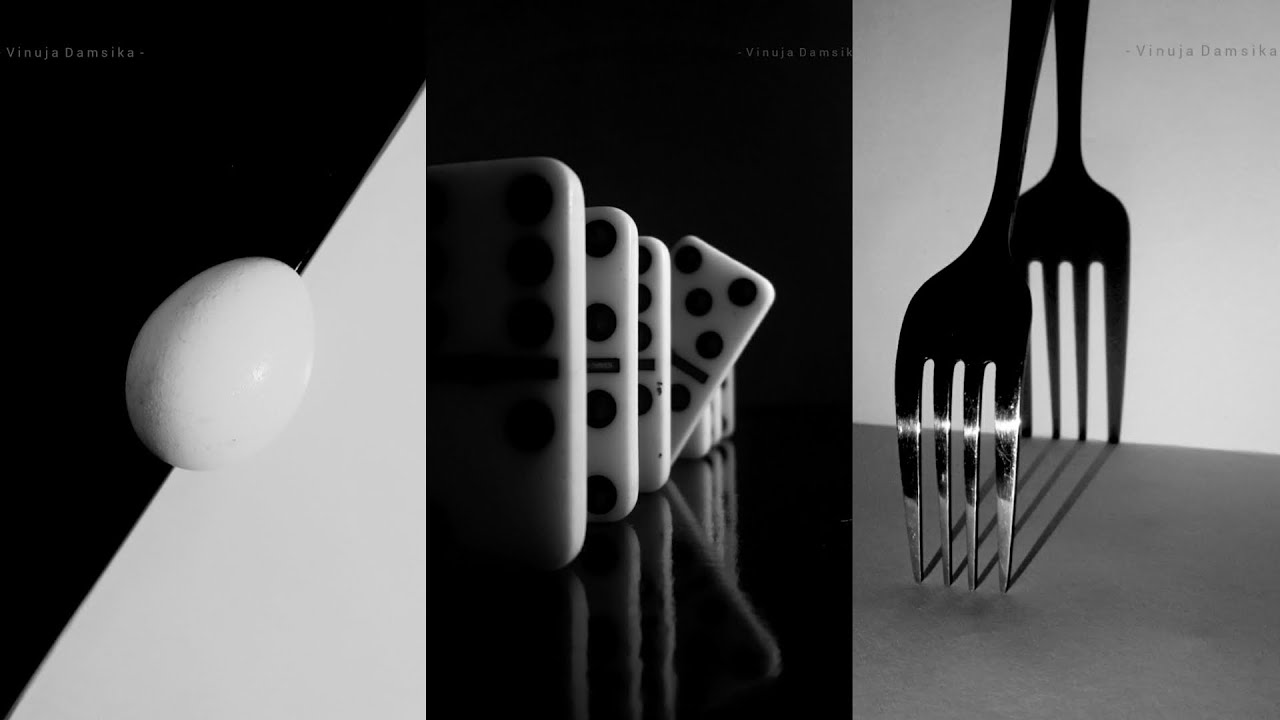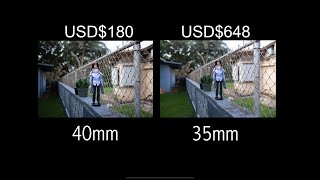Monochrome Photography Ideas at Home
If you’re looking for something new and exciting to do at home, why not try your hand at monochrome photography? It’s a great way to get creative and experiment with different techniques. Plus, it’s easy to get started – all you need is a camera and a few simple supplies.
Here are some ideas to get you started:
1. Play with light and shadow. Monochrome photography is all about contrast, so try experimenting with different lighting setups.
For example, you could use a lamp to create dramatic shadows, or shoot in black and white to highlight texture.
2. Get closeup shots. One of the best things about monochrome photography is that it allows you to really focus on small details.
So don’t be afraid to get up close and personal with your subject matter!
3. Think outside the frame. Monochrome photos don’t have to be traditional portraits or landscapes – get creative and think outside the box!
Try shooting abstract patterns or textures, or even experimenting with double exposures.
Monochrome photography is a great way to add some creative flair to your photos. Here are a few ideas to get you started:
1. Use contrasting colors in your composition.
Black and white make a striking combination, but you can also try other color combinations like blue and white or red and black.
2. Play with light and shadow. Monochrome photos can be very dramatic, so don’t be afraid to experiment with different lighting techniques.
3. Get creative with textures and patterns. Look for interesting textures and patterns around your house that you can incorporate into your shots.
4. Use props and accessories to add interest.
Creative BLACK AND WHITE PHOTOGRAPHY IDEAS | Monochrome Photography ideas you can try at home.
How Do You Take Good Monochrome Pictures?
To take good monochrome pictures, you need to understand how your camera’s settings affect the final image. You also need to be aware of the different techniques that can be used to produce high-quality monochrome images.
Most digital cameras have a “monochrome” or “black and white” setting that can be selected when taking pictures.
This will ensure that the camera captures the scene in shades of gray, rather than in full color. However, simply selecting this setting is not enough to guarantee good results.
The exposure settings on your camera will have a big impact on the quality of your monochrome images.
When taking black and white photos, it’s important to underexpose the image slightly, as this will help to bring out the details and contrast. To do this, you’ll need to experiment with your camera’s aperture, shutter speed, and ISO settings until you find a combination that works well for the particular scene you’re trying to capture.
In addition to adjusting your camera’s settings, there are a number of other techniques you can use to create stunning monochrome photos.
One popular method is known as “selective desaturation,” which involves selectively removing color from an image using photo editing software. This can be used to great effect in order to draw attention to certain areas of an image or create a particular mood or atmosphere.
With a little practice and experimentation, you should be able take amazing monochrome pictures that rival those taken by professional photographers.
Just remember to pay attention to your camera’s settings and experiment with different techniques until you find what works best for you!
What is Best Example of Monochrome Photography?
Monochrome photography is the art of capturing images in black and white. It can be used to create stunningly beautiful images that are full of contrast and texture. The best examples of monochrome photography are those that make use of light and shadow to create a sense of drama and tension.
Often, monochrome images will have a strong focal point, with the rest of the image receding into darkness. This can create a feeling of mystery and intrigue, drawing the viewer into the scene.
When it comes to choosing subjects for monochrome photography, there are no hard and fast rules.
However, some subjects do lend themselves particularly well to this medium. Landscapes can look especially striking in black and white, as can architectural scenes. Portraits can also be very effective in monochrome, lending an air of sophistication and elegance to the subject matter.
If you’re interested in trying your hand at monochrome photography, don’t be afraid to experiment. Shoot a variety of different subjects in both bright sunlight and dim shadows; play around with different compositions; and most importantly, have fun!
How Can I Take Black And White Photos at Home?
If you’re interested in taking black and white photos at home, there are a few things you’ll need to do in order to get started. First, you’ll need to find a camera that allows you to change the settings to black and white. Many digital cameras have this option, so it shouldn’t be too difficult to find one that will work for you.
Once you have your camera, experiment with the different settings until you find one that gives you the results you’re looking for.
In addition to finding the right camera setting, it’s also important to pay attention to lighting when taking black and white photos. Good lighting can make all the difference in how your photos turn out.
Natural light is always best, so try to take your photos near a window or outdoors if possible. If you’re using artificial lighting, be sure not to overdo it – too much light can wash out your photo and make it look less striking in black and white.
Finally, don’t be afraid to experiment!
Black and white photography can be very forgiving, so don’t be afraid to try new things and see what works best for you. With a little practice, you’ll be able take beautiful black and white photos that will impress your friends and family members alike!
Is It Possible to Take a Monochromatic Color Photograph?
Yes, it is possible to take a monochromatic color photograph. A monochromatic color photograph is defined as a photograph that consists of only one color. To create a monochromatic color photograph, you will need to use a filter when taking the photo.
The most common type of filter used for this purpose is a red filter. By using a red filter, all other colors will be filtered out, leaving only the red tones in the final image.

Credit: www.pinterest.com
Monochrome Picture Converter
If you’re a photography enthusiast, chances are you’ve considered converting some of your pictures to black and white. While most digital cameras have a monochrome mode, the results aren’t always as good as those achieved by using a specialist converter.
There are many reasons why you might want to convert a picture to black and white.
Maybe you want to create a certain mood or atmosphere, or perhaps you think the colors in the original image are distracting. Whatever your reason, there are some great monochrome converters out there that can help you get the perfect result.
One of the best things about using a converter is that it gives you much more control over the final image than your camera’s monochrome mode does.
With most converters, you can adjust things like contrast, brightness, and saturation to get exactly the look you’re after.
If you’re serious about black and white photography, then investing in a quality converter is definitely worth considering. It may take some time to get used to working with one, but the results will be well worth it!
Monochrome Photography Awards
Monochrome Photography Awards is an annual award given out by the International Center of Photography (ICP) to recognize photographers who have made significant contributions to the field of monochrome photography. The award was established in 2014 and is given out in three categories: Fine Art, Documentary, and Experimental.
This year’s winners were announced on May 8th, 2019.
In the Fine Art category, the winner was Elina Manninen for her series “The Unseen.” In the Documentary category, the winner was Dorothea Lange for her series “Migrant Mother.” And in the Experimental category, the winner was Anja Niemi for her series “Self-Portraits as Other People.”
Each year, the ICP selects a jury of experts to review submissions and choose the winners. This year’s jury consisted of Photographer Thomas Roma, Curator at Large at ICP; Director of Photography at National Geographic Magazine Sarah Leen; Associate Professor at Yale University School of Art Mary homes; Founder & Editor-in-Chief of Aperture magazine Lesley A. Martin; and Senior Curator Emeritus at Metropolitan Museum of Art Jeff Rosenheim.
The ICP has a long history of supporting monochrome photography and its practitioners.
In fact, one of its co-founders, Cornell Capa, was himself a monochrome photographer. The ICP is committed to preserving this art form and ensuring that it remains an important part of our visual culture.
Conclusion
If you’re looking for some photography inspiration and want to try something new, monochrome photography is a great option. And the best part is, you don’t need to go anywhere special to do it – you can create stunning black and white images right in your own home.
Here are some ideas to get you started:
1. Look for interesting patterns and shapes. This could be anything from the lines of a staircase or the shadows cast by furniture.
2. Play with light and shadow.
Monochrome photos are all about contrast, so try experimenting with different lighting setups.
3. Use everyday objects as props. Flowers, fruit, or even cutlery can make beautiful subjects when photographed in black and white.
4. Get creative with composition. Think outside the box and try unconventional angles or perspectives.






